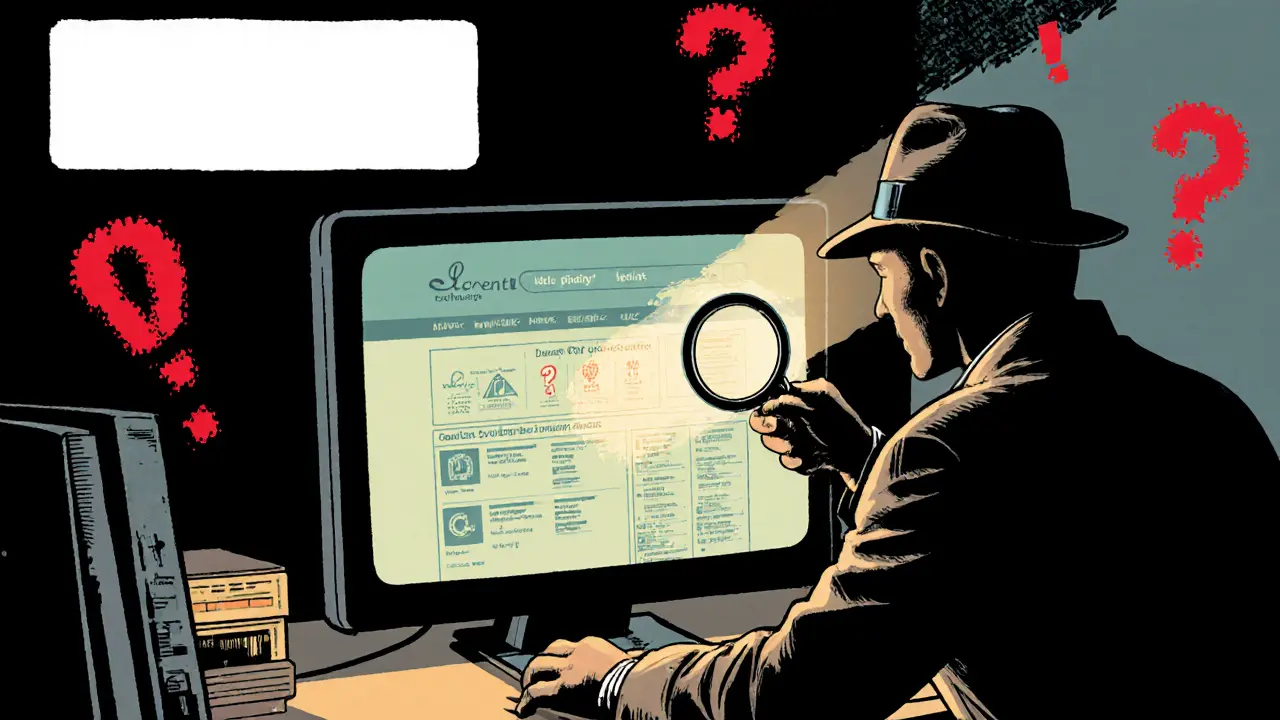Lucent Crypto Exchange Review: Is It Trustworthy or a Red Flag?
A detailed review of Lucent Crypto Exchange, highlighting the lack of public data, key security red flags, verification steps, and comparison with established platforms.
Read MoreWhen working with crypto exchange verification, the process of confirming that a digital asset platform is legitimate, secure, and compliant. Also known as exchange due diligence, it helps you avoid scams and protect your funds.
First, look at regulatory compliance, the set of licenses and legal obligations an exchange must meet in its operating jurisdiction. A compliant exchange will display its registration number, publish its AML/KYC policies, and often appear on official regulator lists. Checking this reduces the risk of sudden shutdowns or legal trouble.
Next, examine the security audit, an independent technical review of the platform’s code, smart contracts, and infrastructure. Audits from reputable firms (e.g., CertiK, Hacken) are usually posted publicly. When an audit is recent and thorough, you gain confidence that the exchange’s wallets and transaction systems resist hacks.
Liquidity assessment is another crucial factor. Liquidity, the depth of order books and the ability to execute large trades without slippage, shows whether you can move in and out of positions quickly. Exchanges with high daily volume and tight spreads are less likely to get stuck during market spikes.
Finally, consider user reputation, the collective feedback from traders, media reports, and community forums. Positive reviews, low complaint rates, and transparent communication indicate a trustworthy platform. Negative patterns, such as frequent withdrawal delays, should be red flags.
Putting these pieces together forms a clear verification checklist: regulatory compliance ensures legal standing; security audits verify technical safety; liquidity assessment guarantees market efficiency; and user reputation reflects real‑world performance. In other words, verify crypto exchange processes encompass these four pillars, each influencing the next. If any pillar is weak, the overall trust level drops.
Many traders start with the regulator’s website, then move to the audit reports page, followed by checking volume charts on sites like CoinMarketCap, and finally scrolling through Reddit or Trustpilot comments. This systematic flow saves time and cuts out guesswork.
Beyond the basics, you may also check fee structures, withdrawal limits, and the availability of insurance funds. Some exchanges hold a portion of user assets in cold storage, which adds another layer of protection. Others partner with custodial services that back deposits with proven financial institutions.
Remember, verification is not a one‑time task. Regulations evolve, new bugs surface, liquidity can dry up, and user sentiment shifts. Set a reminder to revisit the exchange’s compliance page and audit updates every few months, especially before large trades.
Below you’ll find a curated list of articles that walk through each verification step in detail, compare top platforms, and share real‑world examples of both successful and failed verifications. Dive in to sharpen your due‑diligence toolkit and trade with confidence.

A detailed review of Lucent Crypto Exchange, highlighting the lack of public data, key security red flags, verification steps, and comparison with established platforms.
Read More